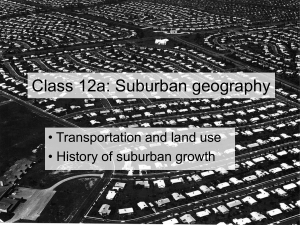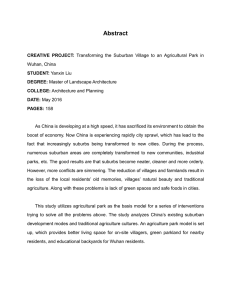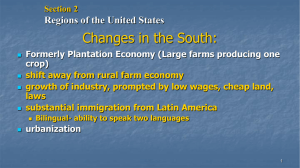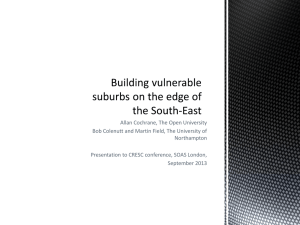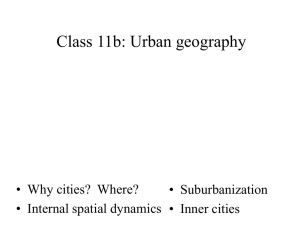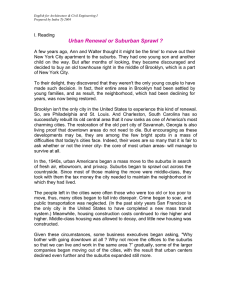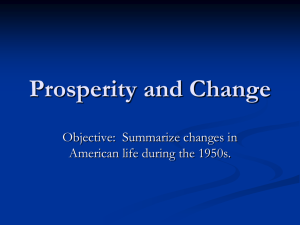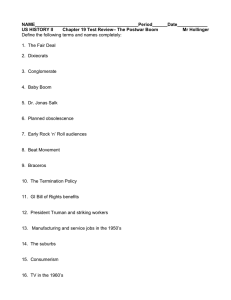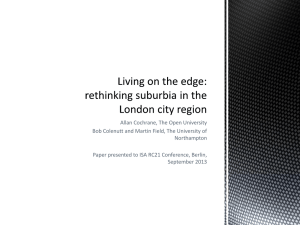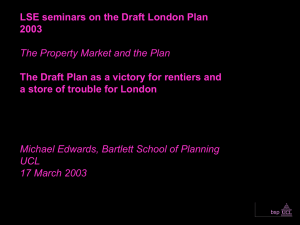Class 12a: Suburban geography • Transportation and land use
advertisement
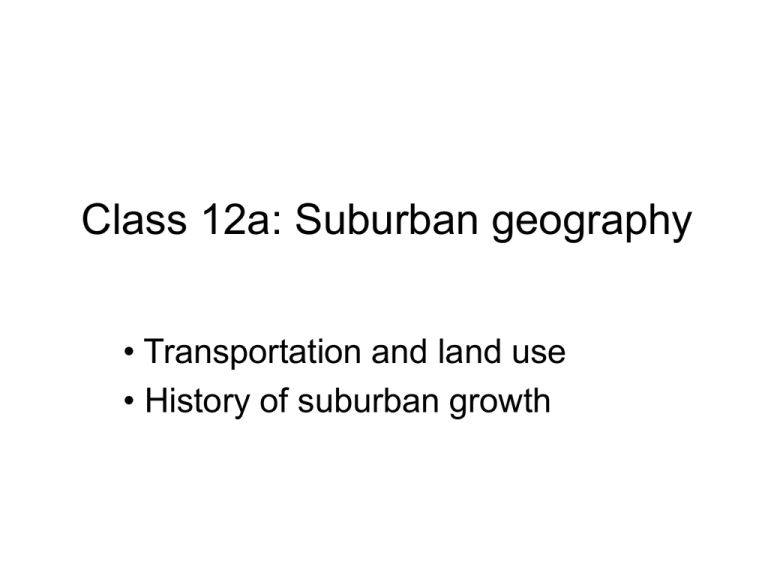
Class 12a: Suburban geography • Transportation and land use • History of suburban growth History of the suburbs (U.S.) • Tied to transportation technology – One hour commute • And federal subsidies – Mortgage deductions, veterans’ loans Transportation and urban land use • Walking, horsecars (to 1888) – High density downtown • Streetcar, commuter rail (1888-1920s) – Interurban electric rail, subways/elevated • Recreational auto (1920s-1950s) – Buses feed streetcar lines • Freeway Era (1950s-) History of the suburbs (U.S.) • Residential land uses – Escaping urban ills, spreading out • Retail followed the market • Industry followed the employees – More space, new buildings – Good transportation access History of the suburbs (U.S.) • Edge cities – At a new kind of crossroads – Subcenters instead of CBD – “Shadow governments” • Leapfrog development – Expensive utilities – Inefficient land use Suburbs and inner cities • Suburban residents and jobs came from somewhere • Growth now limited to suburbs • Segregation by class, race • Falling tax income, rising service needs • Spatial mismatch: jobs moved, poor didn’t Suburbs and inner cities • But agglomeration still matters • And immigrants still arrive in cities • Increasing redevelopment of downtowns – LoDo in Denver – Jack London Square in Oakland – Train station in Sacramento
